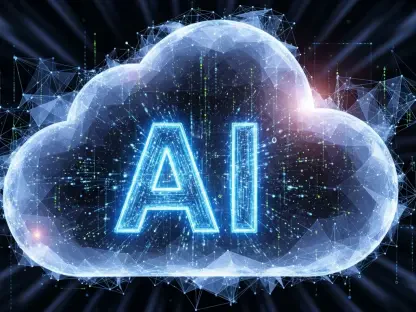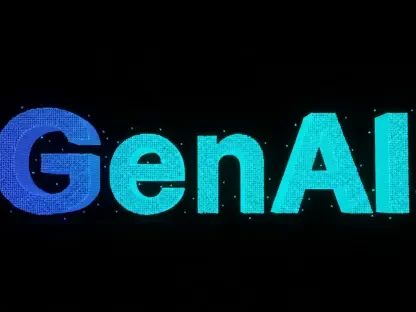Introduction to Generative AI in Quality Assurance
In an era where software reliability can make or break a company’s reputation, consider that over 90% of tech professionals now integrate Artificial Intelligence into their daily workflows, with a significant portion focusing on Quality Assurance (QA). This staggering statistic highlights the rapid adoption of Generative AI (GenAI) as a game-changer in software development, promising to streamline testing processes amid relentless market pressures. The integration of GenAI into QA represents a pivotal shift, offering tools that can transform how defects are identified and resolved before they reach end users.
Quality Assurance remains a cornerstone of software reliability, ensuring that applications meet stringent standards of performance and security. GenAI is emerging as a powerful ally in this domain, automating repetitive tasks and enhancing efficiency in areas such as test case generation, test selection, and predictive analytics. By leveraging machine learning models, these tools can analyze vast datasets to uncover patterns that human testers might overlook, thus elevating the precision of testing outcomes.
The influence of major technological players and market dynamics cannot be understated, with companies like Google, Microsoft, and specialized AI firms driving innovation in QA tools. Industry reports indicate a growing reliance on AI solutions, fueled by the need for faster release cycles and higher quality standards. As GenAI continues to penetrate the QA landscape, its applications are reshaping traditional methodologies, setting the stage for a deeper exploration of its potential and pitfalls.
Current Trends and Market Insights in GenAI for QA
Key Trends Shaping AI Adoption in Testing
The integration of GenAI into QA is being propelled by a pressing demand for automation, which prioritizes speed and efficiency in software testing. Modern development cycles, often constrained by tight deadlines, are pushing organizations to adopt AI-driven tools that can generate test scenarios in a fraction of the time required by manual efforts. This trend is redefining the pace at which software can be validated and deployed to market.
Emerging tools and technologies are facilitating a notable shift from manual to hybrid workflows, blending human expertise with machine capabilities. QA professionals are evolving from traditional testers into strategic overseers, focusing on refining AI outputs rather than creating them from scratch. This transformation opens up new avenues for skill development, encouraging testers to master AI interaction and data analysis to stay relevant in a rapidly changing field.
Market drivers such as the urgency for rapid deployment and the complexity of modern applications are accelerating GenAI adoption. The ability to quickly adapt to changing requirements through AI-generated insights is becoming a competitive advantage. Additionally, opportunities for upskilling in AI literacy are emerging, enabling QA teams to harness these tools effectively while navigating the cultural shift toward technology-driven processes.
Market Data and Future Projections
Current data underscores the pervasive influence of GenAI in QA, with reports indicating that approximately 90% of tech professionals utilize AI tools in some capacity within their workflows. However, actual implementation in testing-specific tasks hovers around a more modest 16%, reflecting barriers like trust and organizational readiness. These figures suggest a gap between interest and practical application that the industry must bridge.
Looking ahead, growth projections from industry analyses, such as comprehensive reports on AI at work, forecast a significant uptick in GenAI adoption in QA over the next few years, from 2025 to 2027. Performance indicators point to a potential doubling of AI-driven testing tools in enterprise settings, driven by advancements in model accuracy and integration capabilities. Such expansion signals a robust future for AI in enhancing testing efficiency.
A forward-looking perspective reveals that GenAI could fundamentally redefine QA standards by automating complex analytical tasks and improving defect detection rates. As tools become more sophisticated, they are expected to integrate seamlessly with existing systems, reducing friction in adoption. This evolution promises to elevate the benchmarks for software quality, positioning GenAI as a central pillar of future QA practices.
Challenges of Integrating GenAI in QA Without Technical Debt
The adoption of GenAI in QA is not without hurdles, with primary concerns revolving around the risks of inaccuracy and incomplete test coverage. AI-generated outputs can sometimes miss critical edge cases or produce flawed logic, leading to gaps in validation that could compromise software integrity. These shortcomings erode trust among QA teams, posing a significant barrier to widespread acceptance.
Technological challenges further complicate integration, as issues like AI hallucinations—where models generate incorrect or irrelevant results—and model drift, where performance degrades over time, can undermine reliability. Cultural resistance also plays a role, with some testers hesitant to rely on AI due to unfamiliarity or fear of diminished control. Addressing these concerns requires a blend of technical solutions and change management strategies.
To mitigate the long-term costs of technical debt, structured processes and human oversight are essential. Implementing rigorous review mechanisms ensures that AI outputs are validated before deployment, while clear guidelines for AI usage can prevent over-reliance on automation. By fostering a collaborative environment where human judgment guides AI tools, organizations can minimize rework and maintain high standards of quality.
Regulatory and Governance Considerations for GenAI in QA
The regulatory landscape surrounding GenAI in QA is intricate, with data privacy and compliance emerging as critical focal points. As AI tools often process sensitive information, adhering to frameworks like GDPR or CCPA is non-negotiable to protect user data and avoid legal repercussions. Ethical considerations, such as bias in AI models, also demand attention to ensure fairness in testing outcomes.
Governance measures are vital to secure GenAI applications in QA, with practices like encryption safeguarding data integrity and audit trails providing transparency in AI decision-making. Role-based access controls further limit exposure to sensitive information, ensuring that only authorized personnel interact with critical systems. These mechanisms build a foundation of trust and accountability in AI-driven processes.
Regulatory standards and organizational policies significantly shape how GenAI is adopted within QA frameworks. Compliance requirements often dictate the pace and scope of AI integration, influencing everything from tool selection to workflow design. By aligning with these guidelines, companies can navigate the complexities of AI adoption while maintaining a commitment to security and ethical responsibility.
Future Outlook for GenAI in Quality Assurance
The trajectory of GenAI in QA points toward substantial advancements in tool accuracy and seamless integration with existing development pipelines. Future iterations of AI models are expected to better understand contextual nuances, reducing errors and enhancing the relevance of generated test cases. Such progress could redefine the efficiency of QA departments across industries.
Emerging technologies and potential market disruptors are poised to further influence GenAI’s role in testing, with innovations in explainable AI fostering greater transparency in decision-making processes. QA professionals are likely to gravitate toward hybrid models that balance automation with human insight, reflecting a preference for collaborative approaches. This shift underscores the importance of adaptability in the evolving tech landscape.
Key factors such as regulatory developments, global industry demands, and a push for innovation in AI transparency will shape growth areas for GenAI in QA. As organizations prioritize compliance and data security, governance frameworks will become more robust, guiding the ethical use of AI. These dynamics suggest a future where GenAI not only augments QA but also drives strategic advancements in software quality.
Conclusion and Recommendations for Sustainable AI Adoption in QA
Reflecting on the insights gathered, it becomes evident that GenAI holds transformative potential for QA, offering unparalleled speed and efficiency while posing significant challenges in accuracy and trust. The journey through trends, market data, and regulatory considerations paints a picture of an industry at a crossroads, balancing innovation with responsibility. This exploration highlights the necessity of strategic integration to avoid the pitfalls of technical debt.
Looking ahead, actionable steps emerge as critical for sustainable adoption. Organizations are advised to implement human-in-the-loop workflows, ensuring that AI serves as a supportive tool under human guidance to maintain quality. Investment in training programs becomes a priority, equipping QA teams with the skills to interact effectively with AI systems and fostering confidence in their outputs.
Establishing robust governance frameworks stands out as a cornerstone for success, with policies on data security and compliance shaping trust in AI-driven processes. By prioritizing these recommendations, companies can harness GenAI’s capabilities while safeguarding software integrity. This path forward promises not just adaptation but a reimagining of QA as a collaborative, technology-enhanced discipline poised for future growth.









